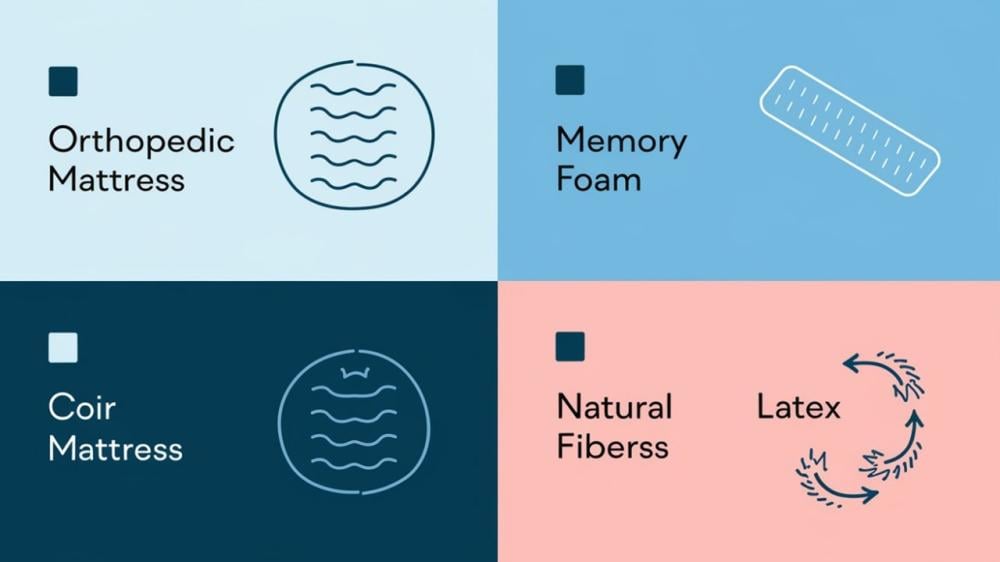
What is a Mattress? A Comprehensive Guide to Choosing the Right One
When it comes to selecting the ideal mattress, the options can be overwhelming. Should you shop online or in-store? Opt for budget-friendly or luxury? Consider material, size, or firmness? This article will break down everything you need to know about mattresses, helping you make an informed decision tailored to your needs.
What is a Mattress?
A mattress is a large, rectangular cushion placed on a bed frame, designed to provide comfort and support during sleep. Its primary function is to ensure proper alignment and alleviate pressure on the body, making it a key factor in overall health and well-being. A quality mattress offers support for the back, neck, and spine, promoting restorative sleep.
Investing in a durable and comfortable mattress can improve your sleep quality, reduce discomfort, and last for years with proper maintenance.
Types of Mattresses
The modern mattress market offers a variety of options to suit different preferences and needs. Here are the most common types:
1. Orthopedic Mattress
Designed for individuals with back and joint pain, orthopedic mattresses provide firm support and evenly distribute body weight. They are typically made with a hybrid of materials to maximize comfort and durability.
Benefits:
- Alleviates pain and pressure points.
- Promotes healthy posture and circulation.
- Ideal for individuals with chronic pain.
2. Memory Foam Mattress
Memory foam mattresses conform to your body’s shape, providing excellent support and motion isolation. The foam’s density makes it resilient and comfortable, making it a popular choice for various sleepers.
Benefits:
- Superior motion absorption.
- Hypoallergenic and dust mite resistant.
- Offers personalized comfort.
3. Coir Mattress
Made from natural coconut coir, this eco-friendly option combines firmness with breathability. Often paired with latex or foam, coir mattresses balance softness and support, making them a durable and sustainable choice.
Benefits:
- Maintains an ideal sleep temperature.
- Reduces back pain.
- Budget-friendly and environmentally conscious.
4. Latex Mattress
Crafted from natural or synthetic latex, these mattresses are highly durable and breathable. They provide even weight distribution and are suitable for those with allergies, as they naturally resist dust mites and other irritants.
Benefits:
- Low-maintenance and durable.
- Excellent airflow for temperature regulation.
- Environmentally friendly.
How to Choose the Right Mattress
Choosing the right mattress depends on factors like your sleeping position, body type, and specific needs. Consider the following:
- Sleeping Position: Side sleepers may prefer memory foam, while back sleepers might benefit from a firm orthopedic mattress.
- Body Support: Ensure the mattress provides adequate support to align your spine and reduce pressure.
- Durability: Look for materials like latex or hybrid constructions for long-lasting performance.
- Allergies: Opt for hypoallergenic materials to minimize irritation.
Conclusion
There’s no universal “best” mattress—it all depends on your personal preferences and requirements. Consider factors like support, durability, and eco-friendliness to make an informed choice. A good mattress is an investment in your health, ensuring restful sleep and a fresh start to each day.
FAQs
1. What is another name for a full-sized mattress?
A full-sized mattress is also called a double bed.
2. What are the dimensions of a full-sized mattress?
A standard full-sized mattress measures 54 inches wide by 75 inches long.
3. Which is larger: a full-sized mattress or a queen-sized mattress?
A queen-sized mattress is larger, measuring 60 inches wide by 80 inches long.
4. How thick is a standard mattress?
Most mattresses range between 8 to 12 inches in thickness, depending on the material and design.
This guide should help you navigate the complexities of mattress shopping and find the perfect one for your needs.

